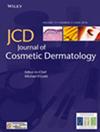Low-Energy Delicate Pulsed Light Therapy for Sensitive Skin: A Retrospective Study
Abstract
Background
Sensitive skin (SS) is a multifactorial syndrome that affects about half of the world's population. However, there is no standardized treatment protocol. Photovoltaic technology has been widely used in recent years for the treatment of sensitive skin, but the efficacy of low-energy delicate pulsed light (DPL) in the treatment of sensitive skin is unknown.
Objective
To explore the efficacy and safety of low-energy DPL treatment for sensitive skin.
Methods
This study included 181 patients with SS who attended the Department of Dermatology from January 2019 to January 2022. All patients were treated with DPL (5.0–6.8 J/cm2). Patients received varying durations of DPL, with 4-week intervals based on the severity of their condition. Sensitivity scores at baseline and final treatment were collected using a 10-item sensitivity scale (SS-10). Facial erythema was assessed through the Clinician Erythema Assessment Scale (CEA) based on facial photographs taken at each visit. VISIA-CR was used to visualize and analyze facial redness at baseline and after the final treatment, and erythema values were recorded. Adverse reactions were documented during each treatment session.
Results
Among 181 patients, 86 were SS alone, 32 were rosacea with SS, 32 were acne with SS, and 31 were dermatitis with SS. A significant difference was observed between patients' baseline and final SS-10 scores (p < 0.001). Statistically significant differences were found between the patients' CEA scores at different visits (p < 0.001). Clinical photographs demonstrated significant improvements in facial redness and skin color. VISIA-CR analysis showed a considerable reduction in erythema values at the final treatment visit compared to baseline (p < 0.001). No obvious adverse effects were observed in any of the patients.
Conclusion
Low-energy DPL is an effective and safe treatment for sensitive skin.


 求助内容:
求助内容: 应助结果提醒方式:
应助结果提醒方式:


